Biden Goes Big
The US president's proposed $1.9 trillion recovery package will provide enormous stimulus to the economy. The economic growth that results will generate substantial tax revenues, not just for the federal government but also for the states and municipalities that are now starved of the funds they need to provide essential services.
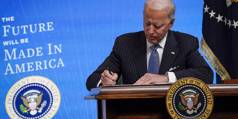
Biden’s Grand Opening
With an economic rescue plan that is both ambitious and well targeted, US President Joe Biden and his team have demonstrated a clear understanding of the scale and range of action that the current situation requires. A broader reconstruction plan can and must come later; but crisis management remains the order of the day.
AUSTIN – In the space of less than three months, events have conspired to transform the American political scene. First, the COVID-19 pandemic defeated Donald Trump – not because public sentiment in this deeply polarized country changed, but rather because the virus forced open the gates of ballot access. Owing to a vast upsurge of early voting and mail-in ballots, the 2020 election’s turnout surpassed that of 2016 by 20 million votes, and featured a greater share of the electorate than any US presidential election since 1900.
Second, thanks to ten years of local organizing by voting-rights activists led by Stacey Abrams, Georgia replaced both of its Republican senators with Democrats in the January 5 runoff elections, thus handing narrow control of the US Senate to President Joe Biden’s Democratic Party.
Finally, Trump and some of his fellow Republicans incited a rabble to ransack the US Capitol. That catastrophic political miscalculation resulted in the death of five people (including a police officer), Trump’s second impeachment, and the lasting disgrace of the defeated president’s most aggressive would-be successors, Senators Josh Hawley of Missouri and Ted Cruz of Texas.
The moment was ripe for Biden to tell the country about his own economic plans. And when he spoke, it was with focus, precision, and a clear sense of the scale and range of action that the situation requires.
Biden has proposed a rescue plan that will advance a number of urgent objectives at once. His first priority is public health, a long-neglected issue that can be met in part by creating community vaccination centers and medical clinics, and by training and employing at least 100,000 new public-health workers in the basics of epidemic control. Essential elements of this plan will reach into low-income and minority communities, as well as into prisons and jails.
A second goal of the Biden plan is income support, which will take the form of extra cash for households below a certain threshold, extended and expanded unemployment insurance, emergency paid leave, grants to renters and small businesses, and tax credits for childcare costs.
Third, the Biden plan aims to stabilize federalism with some $350 billion in support for state and local governments whose tax bases have imploded. Such funding is urgently needed to keep teachers, firefighters, police, and other essential public servants on the job – as is the additional $20 billion that would go to keep public transit operating through the crisis.
Finally, the Biden plan has a fair-play element, proposing a long-overdue increase of the federal minimum wage to $15 per hour, which would raise wages for some 30% of all American workers.
Biden has correctly billed his plan an “American Rescue Plan,” rather than as a “recovery” or “stimulus” program. If successful, the package will stem the pandemic, stave off a variety of social calamities, and prevent the collapse of state and local government services. Economic reconstruction is important; but it is a separate objective that can be advanced in a second package. Biden has made sure to acknowledge this point: once the rescue plan has been implemented, the reconstruction can begin, with an emphasis on infrastructure, energy, and climate policy.
Among other things, this second phase can be used to put America’s advanced sectors back to work in the service of public purpose and social need.
This sequencing is crucial, because these sectors will not simply revive and return to their previous positions in the economy. Now that the pandemic has upended aerospace, commercial and retail construction, the energy sector, and much else, a wide array of skills and resources will need to be reallocated. A second-phase economic program can guide the way.
Most important, Biden’s plan made no mention of Wall Street shibboleths about budget deficits or the national debt. It does not propose merely temporary measures that will be reversed later, nor does it appeal to economic forecasts to cover a gap between the program’s outlays and results. Given the orthodox cast of Biden’s economic team, this is especially encouraging to see. Having committed to an ambitious agenda at the outset, it will be somewhat more difficult for his people to backslide later on.
Still, three things that are missing from the Biden package will need to be taken up in due course. First, neither the public-health programs nor the infrastructure, energy, and climate initiatives will provide enough jobs to offset the losses in America’s vast services sector. Following the inevitable decline of office and retail work and the disappearance of a wide range of in-person services that could not survive the pandemic, middle-class Americans have retreated into their suburban homes. It is already clear that, sooner or later, a guaranteed public or non-profit jobs program will need to be put on the table.
Second, in order to return to viability, many services and small businesses will need to move to new ownership and cost-sharing arrangements, which can best be achieved through cooperative structures with appropriate local oversight and financing. And similar arrangements will be needed to sustain the work of artists, actors, musicians, and writers. As in the New Deal, America’s creative people need (and deserve) support that the commercial economy will not be able to provide.
Lastly, once the immediate crisis has passed, emergency measures to defer rent, mortgages, health bills, and student loans will need to be submitted to a system that can write down, cancel, or settle unpayable debts in a fair and orderly fashion.
These later steps presuppose the earlier ones. But following a magnificent inauguration, we are already seeing the first rays of coherent, qualified, dedicated, and serious leadership. Biden is certainly capable of meeting the emergency at hand, and he has already seized the moment. The country now must demand that Congress approve his program immediately.
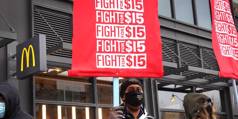
The Case for a Higher Minimum Wage
In their push to increase the US federal minimum wage from $7.25 to $15 per hour, President Joe Biden and his fellow Democrats are on solid ground not just economically but also politically. A higher wage floor would create an impetus for good jobs, which is precisely what Western economies are lacking.
BOSTON – Efforts in the United States to increase the federal minimum wage from $7.25 to $15 per hour have gained steam now that the Democratic Party controls the White House and Congress. Such a move makes sense both economically and politically.
Economists are no longer as skeptical of minimum wages as they once were. It used to be assumed that labor markets worked flawlessly, thereby denying employers the monopoly power with which to extract “rents” above the fair return for their physical capital investments. Under such circumstances, basic economics predicts that a higher minimum wage would reduce employment.
But research since the late 1980s has, for the most part, failed to find major disemployment effects from modestly higher minimum wages. The first salvo came from David Card of the University of California, Berkeley and the late Alan B. Krueger of Princeton University (partly building on joint work with Lawrence F. Katz). Their seminal work – summarized in their book Myth and Measurement: The New Economics of the Minimum Wage – found that reduced employment did not follow minimum-wage hikes; in some cases, employment actually rose when wage floors were raised.
Although these findings incited controversy at the time, additional evidence based on larger samples and more fine-tuned empirical approaches confirmed them. If minimum wages don’t reduce employment by much, if at all, it may be inferred that large employers of low-wage workers (like McDonald’s or Walmart) do have market power with which to earn rents (though the jury remains out on this question).
The earlier economics literature may also have underestimated other potential gains from minimum wages. After all, such policies do more than merely increase low-wage workers’ earnings. My own work finds that minimum wages tend to discourage low-pay employment and create an impetus for the creation of good jobs with higher wages, more security, and possibilities for career advancement. Now that opportunities are dwindling for workers without a college degree – many of whom must resort to the gig economy and zero-hour contracts – the need for such an impetus has become more urgent.
True, some economists worry that minimum wages can discourage skills training and other investments in worker productivity. But as Steve Pischke of the London School of Economics and I have shown, this concern has been exaggerated. When employers are earning rents – as seems to be the case in US low-wage markets – they can accommodate a small increase in the minimum wage without having to fire their employees. Better yet, when an employer must pay its workers higher wages, it has a stronger incentive to boost their productivity.
Moreover, while Democrats are already on solid empirical ground for advocating a higher minimum wage, the case for doing so is even stronger when one considers non-economic factors. As the philosopher Philip Pettit explains, humans strive for freedom from “dominance,” which he defines as living “at the mercy of another, having to live in a manner that leaves you vulnerable to some ill that the other is in a position arbitrarily to impose.” One is being dominated when one is “subject to arbitrary sway; being subject to the potentially capricious will or the potentially idiosyncratic judgment of another.”
This definition captures the experience of those throughout human history who have lived in servitude. But as James A. Robinson and I emphasize in our book The Narrow Corridor, even though most workers in the West no longer need to worry about the most brutal forms of labor coercion, the absence of job security and pay sufficient to meet one’s needs means that one is still subject to “dominance.”
Of course, neither Pettit nor James and I were the first to seize on this point. One of the architects of the British welfare state, William Beveridge, argued in 1945 that “Liberty means more than freedom from the arbitrary power of governments. It means freedom from economic servitude to Want and Squalor and other social evils; it means freedom from arbitrary power in any form. A starving man is not free.” Likewise, Article 23 of the 1948 Universal Declaration of Rights states that “Everyone who works has the right to just and favorable remuneration ensuring for himself and his family an existence worthy of human dignity.”
Viewed in this light, the Democrats’ efforts to increase the minimum wage and expand worker protections should be viewed as a return to a social agenda that has been ignored for too long. In an increasingly unequal and stratified economy, policies to level the playing field and reduce dominance are long overdue.
As always, policy design matters. At some point, raising the federal minimum wage probably would start to produce disemployment, and it is reasonable to question whether the same minimum wage should be applied to all parts of the country, considering the cost-of-living differences between New York and Mississippi, or Massachusetts and Louisiana. Hence, some economists call for state minimum wages to be calibrated to average earnings in local labor markets. But most states have not taken the initiative to raise their minimum wages, leaving the federal government to set a new floor.
A higher federal minimum wage would have a powerful economic as well as symbolic effect; but it’s no panacea. Without a voice in the workplace and a safe working environment, workers will remain under the “arbitrary sway” of their employers. If raising the federal minimum wage is the only substantive labor-market policy the Democrats enact during President Joe Biden’s first term, they will not have achieved much, and may even have created stronger incentives for employers to automate more tasks.
The biggest problem facing Western economies today is a shortage of good jobs, owing to an excessive focus on automation and insufficient efforts to develop new technologies and tasks that benefit workers from all backgrounds. A minimum-wage hike would represent an important first step, but it must be accompanied by policies to redirect technological change and provide incentives for employers to create good jobs and better working conditions.
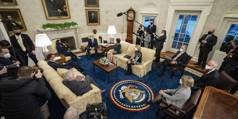
Biden’s Stimulus Trade-Offs
Former US Treasury Secretary Larry Summers has been making the case that Joe Biden's COVID-19 relief plan is so large that it will likely trigger inflation. But his argument has a few glaring flaws – beginning with its failure to appreciate just how badly Americans need support today.
NEW HAVEN – US President Joe Biden’s proposed $1.9 trillion pandemic recovery plan has been welcomed by many, especially on the left, who argue that such an ambitious, well-targeted strategy is precisely what this moment demands. Not surprisingly, many on the right oppose it, ostensibly over concerns about fiscal sustainability. But questions are also being raised by one high-profile Democratic stalwart: Lawrence H. Summers.
Summers is no stranger to stimulus. After the 2008 financial crisis, President Barack Obama appointed Summers – who had served as Treasury Secretary under President Bill Clinton – to head the National Economic Council to advise Obama on how to respond. Recognizing the importance of fiscal policy during crises, Summers was involved in crafting the American Recovery and Reinvestment Act (ARRA) of 2009.
Yes, that stimulus package ended up costing just $831 billion – less than half of what Biden is proposing. But, since then, a consensus has emerged among progressive economists that the economy would have been better off if the ARRA had been much bigger. Summers, who once cautioned the Obama administration against going too big, now says he agrees with that consensus.
And yet, for Summers, that example only strengthens his argument that the Biden proposal goes too far. In 2009, the gap between actual and potential output was about $80 billion per month and rising. While the output gap reached similar levels last year, Summers notes, it is now declining. According to the Congressional Budget Office, the monthly gap should fall from about $50 billion in early 2021 to $20 billion by year’s end – without any new stimulus.
Given this, Summers argues that Biden’s plan is at least three times larger than necessary. Moreover, he believes that the current policy discussion has “not fully reckoned” with the magnitude of the risks this raises, including the possibility of a rise in inflation, which he rightly notes would impede the execution of Biden’s broader economic agenda.
In a recent discussion with Summers, however, Paul Krugman highlighted the uncertain nature of inflation predictions. What is certain, he noted, is that paring down the stimulus package today would have serious consequences for Americans who are struggling during the pandemic.
Those are not the only weaknesses in Summers’ case. For starters, he assumes that what the US economy is facing today is a demand shortage. But the situation is much more complicated than that. Restaurants and airlines are suffering not because consumers do not want their services, but because using their services has become unsafe or even prohibited.
So, if the Biden administration is to spur economic recovery, it will need to make it safe to spend again. Doing so will cost more than simply boosting demand for goods and services would. It may also take time, which is why additional financial support must be provided to those who need it in the interim.
The real-world impact of relief – such as the $1,400 stimulus checks the Biden plan would give most Americans – is also more complicated than Summers seems to think. If people receive a one-off payment to help them cope with a crisis that has no clear end date, they will not spend it as freely as if they received a permanent wage increase. Given this, as Krugman pointed out, a direct comparison between the output gap and the stimulus is misleading.
In discussing the importance and feasibility of fiscal spending, however, both Krugman and Summers missed an important opportunity to address the intellectual elephant in the room: modern monetary theory (MMT).
Biden doesn’t subscribe to MMT in the way, say, Senator Bernie Sanders does. (One of Sanders’ economic advisers during his 2016 presidential campaign was Stephanie Kelton, a prominent exponent of MMT.) And central bankers would never endorse MMT, because it blurs the distinction between monetary and fiscal policy.
Yet, in any discussion about government finance, MMT can provide fundamental insights – beginning with the fact that governments that issue their own currency do not really go bankrupt. Countries could, however, face inflation, balance-of-payments difficulties, or exchange-rate depreciations.
MMT has weaknesses. The theory suggests that if labor is “assigned” to the labor force, then the employment objective will be achieved even without using price or wage mechanisms. Perhaps Krugman’s and Summers’ messages could have been more clearly understood if they stated their views of MMT’s fundamental position explicitly.
Both Biden and Krugman – as well as Treasury Secretary Janet Yellen, who also supports the stimulus proposal – surely understand that a record-breaking spending package risks fueling inflation. But, for them, the immediate welfare of displaced workers is the top priority. Summers, for his part, is more concerned about getting Biden’s broader economic agenda implemented – and that will be very difficult if interest rates rise.
While Summers may be overstating the inflation threat, a careful review of Biden’s plan along the lines he proposes is probably a good idea. Ultimately, however, policymakers will have to decide what risks they are willing to take to help the millions of Americans facing unemployment and hunger.

Can America Escape the Stimulus Trap?
The United States risks locking itself into a recurring cycle of expansionary monetary and fiscal policies, rising asset prices, and redistributive measures that weaken investment and job growth. Avoiding this scenario will require three complementary reforms to accompany future economic stimulus packages.
NEW YORK – As US President Joe Biden’s proposed $1.9 trillion economic stimulus package works its way through Congress, former Treasury Secretary Lawrence Summers (a Democrat) and many Republicans argue that the plan is too big. But perhaps a more important question is whether the United States is falling into a “stimulus trap,” and, if so, how to get out of it.
The Biden rescue plan is the federal government’s third attempt within a year to help the US economy recover from the pandemic-induced recession. The previous two stimulus packages have caused asset prices, especially those of stocks and housing, to increase much faster than wages. Because the rich hold more assets than the poor, both in absolute terms and as a proportion of their income, America’s already large wealth gap will likely be widened further.
Rising inequality will spur demands to address it – including through higher tax rates, higher legally mandated minimum wages, and more generous social-transfer programs. A proposal to more than double the federal minimum wage from $7.25 per hour to $15 per hour within four years, even if it does not become a part of this stimulus package, will likely receive more public and Congressional support once the facts about the widening wealth gap sink in with the public.
Raising the minimum wage is meant to help the poor. But although the law can compel employers to pay workers at least the minimum wage, it cannot force them to hire people or to establish more businesses in low-wage sectors. A $15 federal minimum wage would likely result in lower job creation than would otherwise be the case, especially in low-skill sectors. Many would then cite the weak job market and economy as a reason for the next round of stimulative monetary and fiscal policies.
Of course, additional expansionary measures will fuel another wave of asset-price appreciation that outpaces average wage growth, further widening the wealth gap – and prompting calls for still higher taxes and minimum wages, and more social transfers, which would again weaken investment and job growth, justifying continued economic stimulus. In other words, the US could become stuck in a stimulus trap.
Such a scenario is not inevitable. But avoiding it will require three complementary reforms to accompany any economic stimulus.
First, America must upgrade its education system and strengthen the skills base, so that more workers can move into higher-paid jobs. The aim should be to reduce job overlaps in tradable sectors with low-wage Chinese and Mexican workers and even lower-paid Indians or Vietnamese.
By doing this, the US can compete effectively with low-wage countries in the long term. But policymakers first need to recognize that the low-skilled part of the US labor force is too large, and that America’s current education system, from kindergarten to high school, is failing children from low- and lower-middle-income households. Better retraining programs for the existing labor force would also help.
Second, policymakers should aim to make labor markets more flexible while maintaining decent living standards for all Americans. Here, we could learn from Denmark’s “flexicurity” model, which gives employers the flexibility to hire, fire, and adjust wages as market conditions change, but provides laid-off workers with a generous social safety net so that they can maintain a satisfactory livelihood.
The system’s flexible and reliable contractual work arrangements encourage entrepreneurs to create firms and jobs. Comprehensive lifelong learning programs give workers an opportunity and incentive to improve their skills. And the social security system provides adequate income support during employment transitions.
In a well-designed flexicurity system, minimum-wage increases need to be in line with both overall productivity gains and immigration policy. A minimum-wage rise that exceeds the increase in productivity will create a two-tier labor market in which some fortunate low-skilled workers hold on to their jobs while many others are unable to find work at the legally mandated wage.
Similarly, setting a high minimum wage while easing immigration policy could lead to an influx of low-skilled immigrant workers. If they find jobs in the grey market by offering to work for less than the legal minimum wage, things would become even more difficult for native-born low-skilled workers.
Just to be clear, I am not advocating eliminating immigration or wage growth, but rather emphasizing that wage growth, productivity growth, and immigration policy need to be considered simultaneously as different pieces of a common puzzle.
The third priority is to encourage US households in the middle and low-income brackets to save more by ensuring greater financial literacy and providing easier access to low-cost money management tools. American households currently save about 12-14% of their income on average, a much lower share than in Germany, Japan, or China.
The problem is that Americans in the bottom 40% of the income distribution are hardly saving anything, which means their relative wealth lags further behind each time asset prices increase faster than wages. To skeptics who think that low-income households are not making enough money to save, research suggests that they can and want to if they have the right knowledge and tools. If America saved more, it could also invest more, enabling the economy to grow a bit faster. And that might reduce the dependence on stimulus packages in the future.
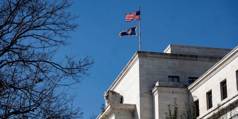
America’s Excessive Government Spending Must Stop
Before his death on February 6, George P. Shultz, a former US Secretary of the Treasury and Secretary of State, co-authored a final commentary warning of the dangers posed by the vast increase in US government spending in recent years, including during the COVID-19 crisis.
STANFORD – Many in Washington now seem to think that the US federal government can spend a limitless amount of money without any harmful economic consequences. They are wrong. Excessive federal spending is creating grave economic and national-security risks. America’s fiscal recklessness must stop.
The COVID-19 crisis has provided the latest impetus for government spending, even to the point of steering the American mindset toward socialism – a doctrine that has always harmed people’s well-being. But some say there is no need to worry about excessive spending. After all, they argue, record-low interest rates apparently show no sign of increasing. The economy was humming along just fine until the pandemic hit, and will no doubt rebound strongly when it ends. And is there even a whiff of inflation in the air?
This thinking is dangerously short-sighted. The fundamental laws of economics have not been repealed. As one of us (Cogan) demonstrated in his book The High Cost of Good Intentions, profligate government spending invariably has damaging consequences.
High and rising US national debt will eventually crowd out private investment, thereby slowing economic growth and job creation. The Federal Reserve’s continued accommodation of deficit spending will inevitably lead to rising inflation. Financial markets will become more prone to turmoil, increasing the chance of another big economic downturn.
Financial markets’ current relative calm and low consumer-price inflation are no cause for comfort. Previous periods of sharp increases in inflation, rapidly rising interest rates, and financial crises have followed periods of excessive debt like a sudden wind, without warning.
Shultz and Taylor’s book Choose Economic Freedom shows that economic indicators in the United States gave no hint in the late 1960s of the subsequent rapid rise in inflation and interest rates in the early 1970s. Likewise, financial markets during the years immediately preceding the 2007-09 Great Recession provided little indication of the calamity that would ensue.
So, what should today’s US policymakers do? Higher tax rates are not the answer. Even before the pandemic hit, every federal tax rate would have had to be increased by one-third in order to finance the current level of federal spending without adding to the national debt. Such an increase would have harmful effects – similar to those of mounting public debt – on economic growth and job creation.
Congress may be tempted to reduce defense spending to help close the deficit, as it often has done in the past. But these previous efforts demonstrably failed. Rather than reduce the budget deficit, Congress instead used the savings from lower defense outlays to finance additional domestic spending.
Unless policymakers abandon their misguided beliefs about budget deficits, cutting defense expenditure now would produce the same result. More importantly, it would be a grave strategic mistake, weakening US national security and emboldening the country’s foreign adversaries – particularly now that China is flexing its muscles in Asia and investing heavily in its military.
Throughout US history, the federal government’s ability to borrow during times of international crisis has proven to be an invaluable national-security asset. Two hundred years ago, the ability to borrow was instrumental in America maintaining its independence from England. During the Civil War, it was crucial to preserving the union. And it proved decisive in defeating totalitarian regimes in the two world wars of the twentieth century.
The US government’s careless spending is jeopardizing this asset. If the country continues along its current fiscal path, the federal government’s borrowing well will eventually dry up. When it does, America will be far less able to counter national-security threats. As hostile foreign governments and terrorist organizations recognize this, the world will become a far more dangerous place.
US policymakers’ mistaken belief that deficits and debt don’t matter is the sad culmination of a long downward slide in fiscal responsibility. From 1789 to the 1930s, the federal government adhered to a balanced-budget norm, incurring fiscal deficits during wartime and economic recessions, and running modest surpluses during good times to pay down this debt. This prudent management of the federal finances was instrumental in establishing America’s strong position in world financial markets.
President Franklin D. Roosevelt’s New Deal broke this norm, and deficit spending has since become a way of life in Washington, with the federal government outspending its available revenues in 63 of the 75 years since the end of World War II. At first, elected officials were deeply concerned about the adverse consequences of their excess spending. But over time, this anxiety gradually lessened. Annual deficits grew so large that by the mid-1970s the US national debt was growing faster than national income.
During the last decade, any remaining fiscal concerns in either the Democratic or Republican parties have seemingly vanished. Freed from a belief that rising deficits and debt are harmful, policymakers unleashed a torrent of new spending. By fiscal year 2019, the federal government was spending $1 trillion per year more in inflation-adjusted terms than it had a dozen years earlier. In fiscal year 2020, the federal government added nearly another $2 trillion of new spending in response to the pandemic, raising the national debt to 100% of national income. This year, another trillion dollars of new spending – if not more – appears to be on the way.
The momentum toward more spending and exploding debt may currently appear unstoppable. But sooner or later, people will look at the facts, see the destructive path fiscal policy is now on, and recognize that they and the US economy will be better off with a different approach. At that point, America’s democratic system will say the expenditure growth must stop.

The Silent Revolution in Economic Policy
With Western economies battered by COVID-19 and central banks running out of ammunition, fiscal policy is the only game in town. This should be openly acknowledged, and fiscal rules should be rewritten to allow for more active counter-cyclical policy and a much larger government role in allocating capital.
LONDON – Something extraordinary has happened to macroeconomic policymaking. Partly owing to the impact of COVID-19, the old orthodoxy has morphed into a new one – but without anyone acknowledging the implications of the shift, or indeed that there were any problems with previous convention.
In a recent interview, for example, former Bank of England (BOE) Deputy Governor Paul Tucker said that “monetary policy should now take a back seat to fiscal policy.” Other central bankers, finance ministry mandarins, and OECD and International Monetary Fund officials are saying much the same.
What our financial paladins never or only rarely acknowledge is how wrong they were in the past. The Financial Times came closest with its recent limping admission that the spending cuts it advocated in 2010 “may have had a bigger negative impact than expected.” That is about the nearest thing to a mea culpa as we can expect from this citadel of the financial establishment, and it does not come close to capturing the magnitude of the rupture with the theory of macroeconomic policy that prevailed only a few years ago.
Before the 2008-09 crash, many believed that macroeconomic stabilization was entirely a matter for monetary policymakers, and should be carried out by independent central banks targeting a mandated inflation rate by means of interest-rate policy. This followed from the orthodox belief that economies were cyclically stable, provided that inflation was controlled. Fiscal policy should be passive, or even contractionary if spending cuts would boost market confidence.
The belief in the superiority of monetary policy survived even the savage 2008-09 downturn. Quantitative easing (QE), or “unconventional monetary policy,” as it was called, would replace orthodox interest-rate policy when the nominal benchmark rate hit its “zero bound.” Central banks worked out all manner of fanciful “transmission mechanisms” by which the extra cash they placed in bond sellers’ hands would flow into the real economy, ignoring the possibility that most of it would instead be used to replenish depleted bank reserves or swap financial assets. Meanwhile, governments would play their part by cutting their own spending.
Although the combination of monetary expansion and fiscal contraction failed to bring about the expected recovery, belief in monetary therapy was still strong when the COVID-19 pandemic struck in 2020. This prevented governments from thinking seriously about channeling the hundreds of billions of new QE money to those parts of the real economy that remained open for business, rather than giving millions of people months of paid leave.
In fact, the outstanding feature of Western governments’ responses to the pandemic was their untargeted character. Policymakers preferred mass lockdowns and furloughs to any attempt to keep people working by deploying technically feasible mass testing, tracking, and tracing systems, as many East Asian countries did.
Now the penny has dropped. In the absence of stimulus, the post-COVID European and US economies are expected to have shrunk in 2020 at the highest rate since World War II, with a concomitant rise in unemployment. Now, furlough schemes will end, and central banks say that they are running out of ammunition – meaning their ability to keep bondholders confident about being repaid.
In these conditions, fiscal policy is the only game in town. We urgently need a new macroeconomic framework, covering the aims of active fiscal policy, the rules for conducting it, and its coordination with monetary policy.
Given that we are suffering from both a demand and a supply shock, recovery policy will also have to address issues of supply. In other words, the Keynesian demand-side remedy of paying people to dig holes and fill them in again is inadequate. Although any direct boost to demand will also indirectly boost supply by increasing national income, a serious lag in the supply response risks causing inflation. For this reason, if for no other, investment in new capacity should be an important part of any fiscal stimulus.
This imperative will, in turn, direct policymakers’ attention to the nature of the supply that the economies of the future will require. In view of the long-term challenges of automation and climate change, any post-pandemic recovery policy should aim to secure the economy’s sustainability, not just its cyclical stability.
The case for fiscal policy is not only that it is a more powerful (because more targeted) macroeconomic stabilizer than monetary policy, but also that government is the only entity apart from the financial system capable of allocating capital. If we are not willing to allow investment in technology and infrastructure to be shaped by a purely financial logic, then the need for what Mariana Mazzucato calls a “mission-oriented” public investment strategy that includes taxation policy becomes inescapable.
The second big discussion we need to have concerns the relationship between fiscal and monetary policy. In the United Kingdom, the expansion of QE since March 2020 has exactly tracked the increase in the budget deficit. Can the perception of BOE independence and the credibility of its inflation target survive when the central bank has been acting as an agent of the Treasury for the past year?
If the government is to be the active macroeconomic player, we need to work out how or whether the central bank should revert to its traditional role of checking fiscal excesses. But the fiscal rules themselves should be rewritten to allow for both more active counter-cyclical policy and a much larger government role in allocating capital than has recently been fashionable.
The pandemic presents an opportunity for an open public discussion of these matters. One hopes that this debate will replace the system of insider nods and winks and subterranean understandings that has shaped our economic fortunes – or misfortunes – for too long.
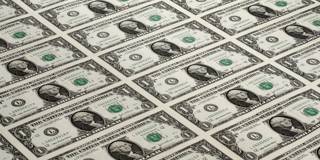
NEW YORK – US President Joe Biden has proposed a $1.9 trillion rescue plan to help the American economy recover from the pandemic. Many Republicans oppose it, suddenly consumed with the fiscal religion they unceremoniously abandon whenever their party controls the White House. The massive tax cuts the GOP bestowed on billionaires and corporations in 2017 resulted in the highest US fiscal deficits on record, outside of a deep recession or war. But the promised investment and growth never materialized.
By contrast, Biden’s proposed spending plan is urgently needed. Recently released data show a slowdown in America’s recovery both in terms of GDP and employment. There is overwhelming evidence that the recovery package will provide enormous stimulus to the economy, and that economic growth will generate substantial tax revenues, not just for the federal government but also for the states and municipalities that are now starved of the funds they need to provide essential services.
Opponents of the Biden plan also disingenuously warn against inflation – that lurking bogeyman that is more fantasy than real threat nowadays. Indeed, some data suggest that wages may be falling in parts of the economy. But if inflation does emerge, the US has ample monetary and fiscal tools at the ready.
The economy would, of course, be better off without zero interest rates. It would also be better if policymakers raised taxes by imposing levies on pollution and restoring greater progressivity to the tax system. There is no valid reason why the richest Americans should pay lower taxes as a percentage of their income than those who are far less well off. Given that wealthy Americans have been the least affected, medically or economically, by the coronavirus pandemic, America’s regressive tax system has never looked uglier.
We have seen how the pandemic has ravaged some sectors of the economy, leading to high rates of firm closure, especially among small businesses. There is a real risk that not passing a large recovery package will do enormous, and possibly long-lasting, damage. This is because poor economic performance heightens economic anxiety (compounding the anxiety induced by the pandemic itself), leading to a downward spiral in which precautionary behavior lowers consumption and investment, further weakening the economy.
Indeed, whatever the cause, weak balance sheets and business failures fuel a contagion that will infect the entire economy, with powerful hysteresis effects coming into play. After all, firms that have gone bankrupt in the pandemic will not un-bankrupt themselves when COVID-19 is brought under control.
The fact that COVID-19 is a pandemic – global in scope – makes matters worse. While the best available data suggests that many developing countries and emerging markets have not been hit as badly as people feared they would be a year ago, the global economy’s unprecedented slowdown implies softening demand for US exports.
Poorer countries don’t have the resources to support their economies that developed countries do. China played a big role in the recovery from the 2008 global financial crisis; but even though it was the only large economy to grow in 2020, its recovery was markedly weaker than in the aftermath of that 2008 crisis (when annual GDP growth exceeded 9% and 10% in 2009 and 2010, respectively). China is also now allowing its trade surpluses to grow, providing less impetus to global growth.
Because the Biden plan incorporates the key features of what must be done, it promises to yield large returns. A first priority is to ensure that funds are available to fight the pandemic, to enable children to return to school, and to allow states and localities to continue to provide the health, education, and other services that people depend on. Extending unemployment insurance will not only help the vulnerable. By providing reassurance, it will lead to an increase in spending, with economy-wide benefits.
The moratorium on evictions through March 31 and assistance to low-income families will also encourage spending. More generally, it is well established that the poor have a high propensity to consume, so a package directed at increasing incomes at the bottom (including an increase in the minimum wage, child credits, and the earned income tax credit) will help revive the economy.
Under President Donald Trump, the programs that focused on small businesses were not as effective as they could or should have been – partly because too much of the money went to businesses that were not really small, and partly because of a rash of administrative problems. It appears that the Biden administration is fixing those problems. If so, expanding aid to businesses will not only help in the short run, but will also put the economy in good stead as the pandemic wanes.
Economists no doubt will argue about every feature of the program’s design – how much money should go here or there; what the threshold should be for receiving cash benefits; and the optimal triggers for scaling down the unemployment insurance program. Reasonable people can disagree about these details. Adjusting them is part of the stuff of which political compromise is made.
But where there should be no disagreement is that large amounts of money are needed urgently, and that opposition to it is both heartless and dangerously short-sighted.